SDKsupplies
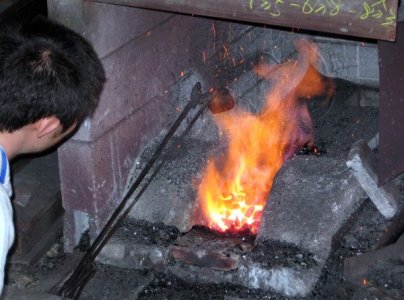 |
Building the fire, note the charcoal between the bricks. |
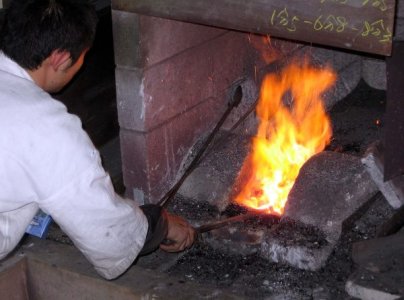 |
|
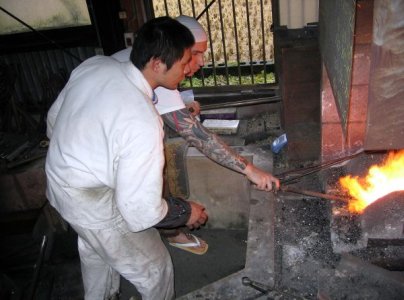 |
Here translator Sebastien Cyr pumps the bellows and rakes the charcoal. |
Notice the square wooden bellows to the left of the forge. The Japanese bellows blows air on the push and the pull stroke, this blows through the bricks onto the charcoal, increasing the temperature. |
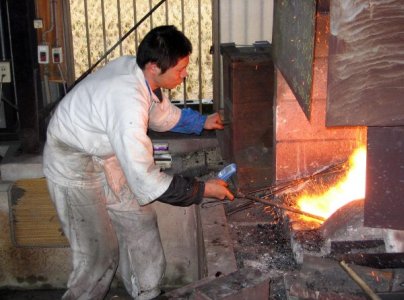 |
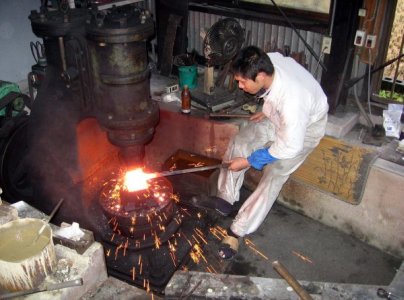 |
What, you thought there would be apprentices with hammers to pound the steel? The power hammer costs a lot less than feeding apprentices. |
A delicate tap to notch the steel so it can be folded. |
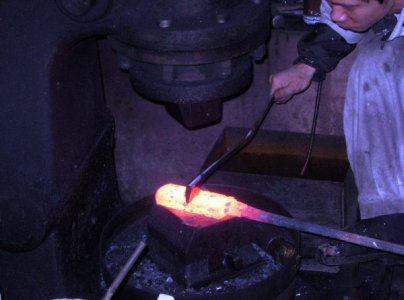 |
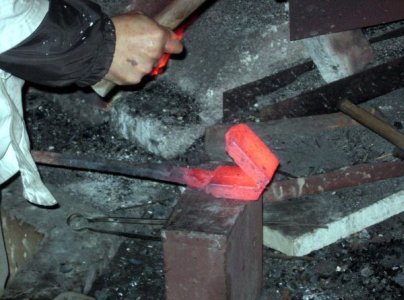 |
Knocking over the block in preparation for the next forge-welded lamination. |
Scraping off some slag to avoid inclusions in the folds. |
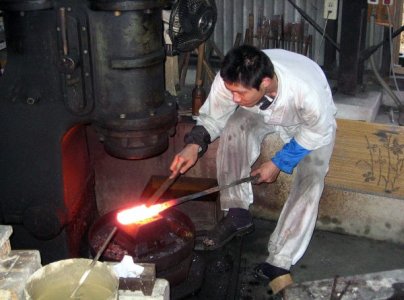 |
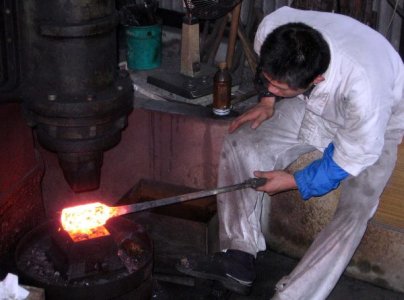 |
Shaping the billet, keeping the edges neat. |
Some adjustment with a smaller
hammer.
|
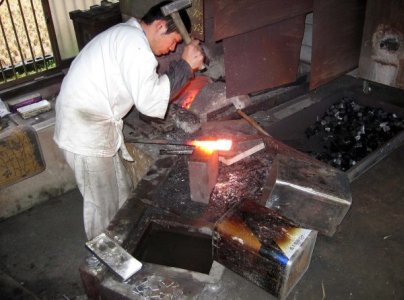 |